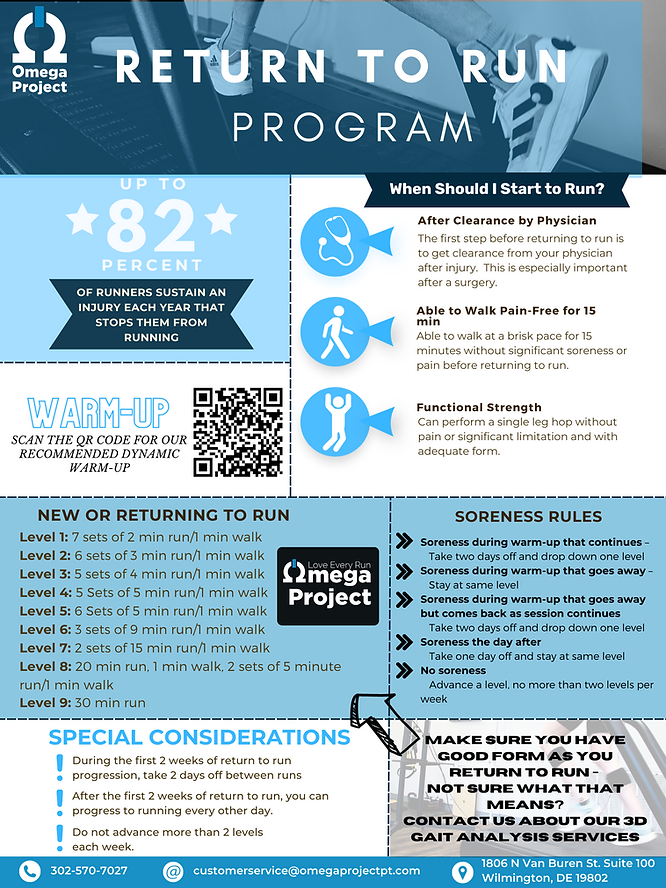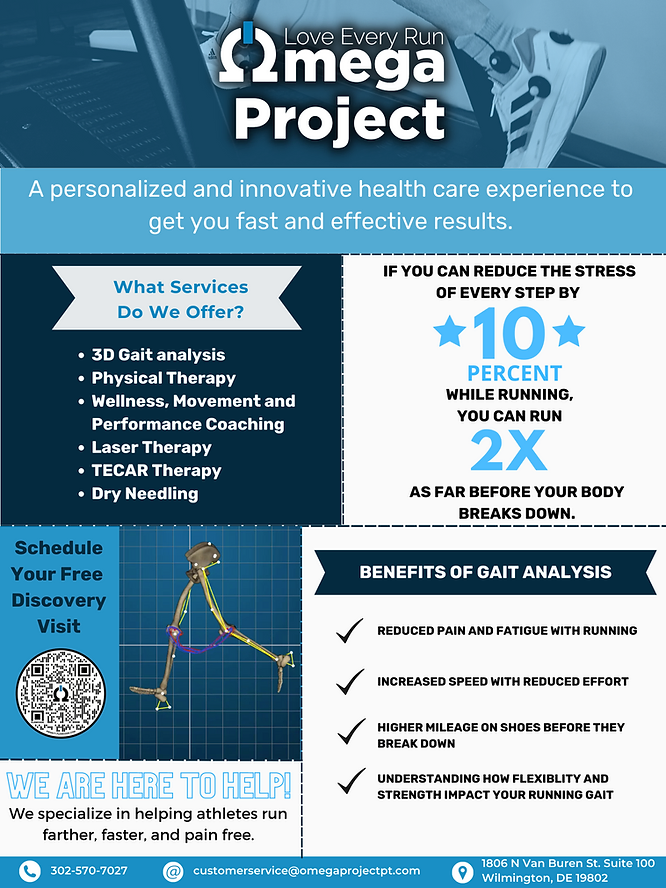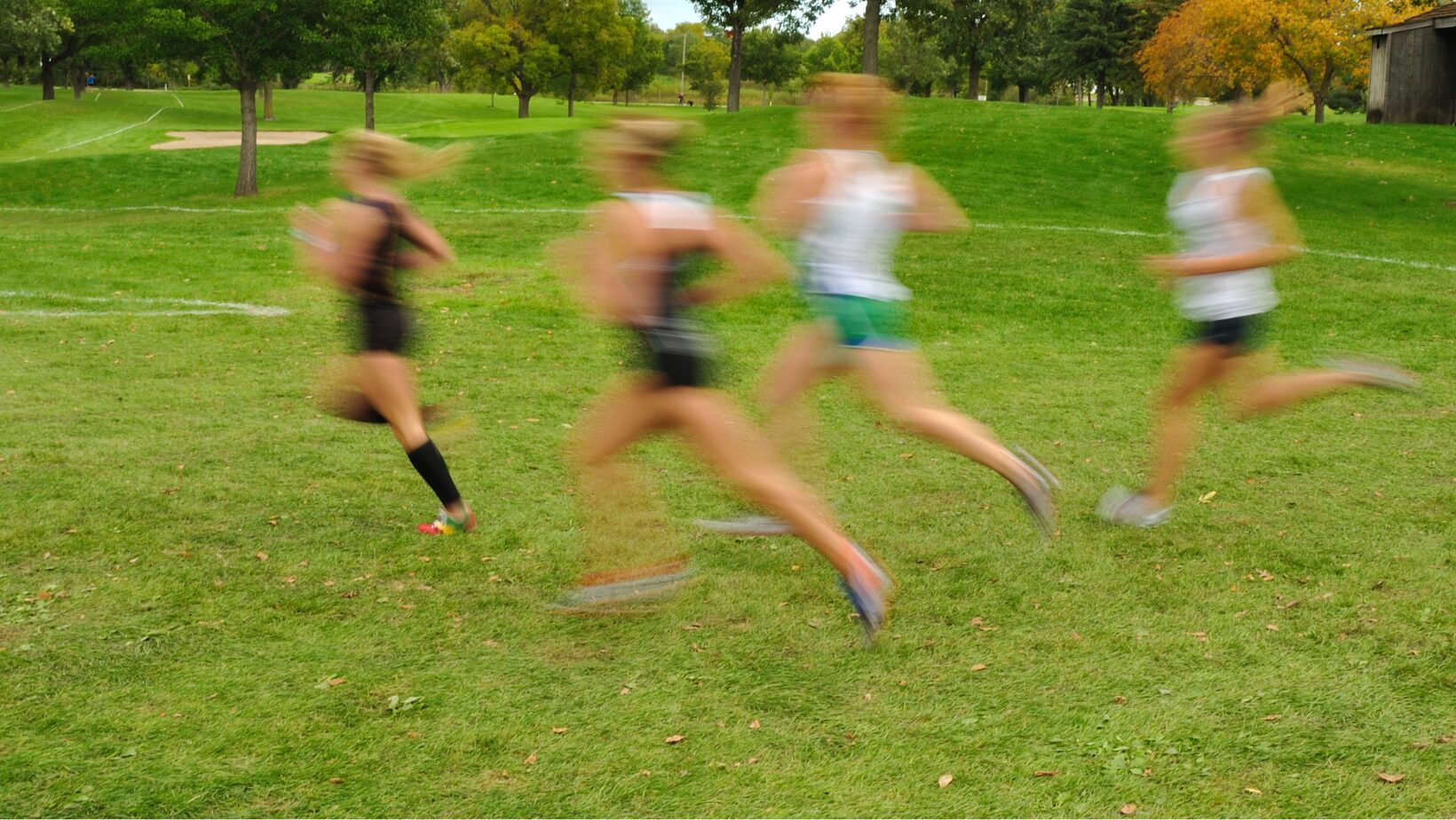If you’re just starting running, returning to running after a long break, or ready to run after an injury, this is a MUST READ. This is also some great information for high school athletes whose preseason is fast approaching. It’s time to get in shape!
The last thing we want is for you to get back to running and end up on the injured reserve, unable to progress toward a goal you just got yourself excited about.
That’s why it’s important to follow a few key steps to get back to running. These steps are part of the return-to-run protocol. It is a graduated return to running that allows you to progressively load your injured joint/body in a way that should help prevent recurrent injury. Often we see runners go from injured and not running for a period of time to running 2-3 miles straight. The result is commonly recurrent pain/injury, which is frustrating and discouraging to any athlete. Our bodies aren’t built to go from 0 to 100 overnight, so let’s consider a safe and more effective way to get you back on the pavement (or treadmill or trails, whatever your preference).
I also like to point out here that following a program like this can help provide the structure you need to keep track of when you should progress and when you should hold back. If you go out and run 3 miles and it hurts, now what? Another two weeks off? Did you re-injure yourself? If you start with a walk/run and it hurts, we know you didn’t do enough to set yourself back. That little bit of pain might be the process of strengthening the injured tissues or muscles that haven’t been used in a while. But now you’ll have the tools to know whether you should back off, stay where you are, or progress.
DOWNLOAD THE RETURN TO RUN FILE
KEEP READING BELOW FOR MORE GREAT TIPS ON RETURNING TO RUNNING
How do I know when I’m ready to start running again?
- This decision should be made (often with the help of a PT or MD) based on symptom irritability, healing time frames, post-operative protocols (if applicable), and your ability to take a brisk 15 min walk pain-free.
- Another great way to assess readiness to start the running progression is performance of a single-legged hop pain-free and performance of the Wall Drill without pain and with proper form.
Do I need to be pain-free if I am going to start running again?
You should always be pain-free at rest and with walking if you plan to start running again. The exception would be pain with walking when you first get up, as with tendonitis or fasciitis. You may still have mild pain/soreness with strengthening/loading activities, but pain levels should be mild and improving. As you begin the running progression, consider the soreness rules as outlined in the attached return to run program.
What do I do if I have some soreness with the running progression?
As you work through the running progression, please follow the soreness rules as shown in the attached return to run program. Again, the benefits of following this program are that you don’t have to go back to those awful “2 weeks of rest” if soreness or pain pops up.
It’s also important but difficult to differentiate muscle soreness and injury soreness. It’s common to develop soreness when getting into a new activity or returning to an activity you haven’t done in a while. The reason we suggest two days off in between runs for the first 2-weeks is to allow for all the tissues to adapt to the activity, not just the injured tissue. Overall, though, it’s safer to run through muscle soreness than to run through injury-related pain.
How quickly should I progress through the return to running progression?
You should never progress more than two levels per week (even if you feel great!).
What else can I do to ensure a healthy return to running?
- Continue to work on the exercises needed to address your mobility, movement, and strength. It is highly recommended to see a professional to find out what these needs are instead of following a general program.
- Get a 3D Gait Analysis – The perfect time to work on making changes to your gait is when you first start running again. You can do all the stretches and strengthening you want, but it likely won’t change the movement pattern you’ve been using for years. There are simple steps we can take to help you improve your form, decrease injury, and improve performance.
- Implement plyometrics
- Did we say continue to work on strength training??!!


We strive to be the number one physical therapy provider in Wilmington, Delaware for those who refuse to quit.
Our blog posts allow us to reach more runners and athletes so they can benefit from fewer injuries and better performance. Please share it so we can spread the love!

